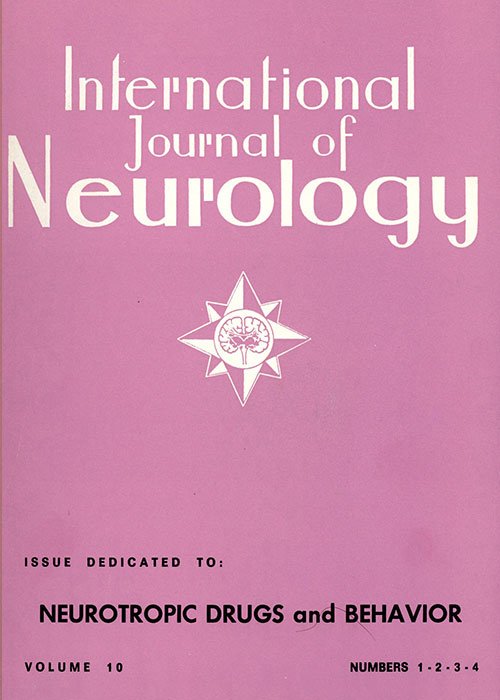Full Issue
DOI:
https://doi.org/10.62486/ijn197527Abstract
The combined issue (Numbers 1–2–3–4) of Volume 10 of the International Journal of Neurology (1975) was dedicated to neurotropic drugs and behavior. It brought together an extensive international collection of experimental and clinical studies examining how psychoactive and neurotropic agents affect neural function, cognition, mood, and behavior.
The volume opened with “Man and Drugs” by Víctor Soriano, framing the issue’s theme within the broader interaction between neurochemistry and human behavior. Experimental contributions included computer-analyzed EEG and behavioral changes following psychoactive drug administration (Roubicek et al.), comparative studies of long-acting neuroleptics (de Francisco), and investigations into the mechanisms of tricyclic antidepressants (Cuenca).
Further research explored the effects of monoamine-altering agents on acoustic responses in the basal ganglia (Dafny et al.), amphetamine antagonism by amantadine and related drugs (Clark and Yuen), and monoamine-linked modulation of locomotor activity (Hassler and Wagner). Studies on dopaminergic and GABAergic systems addressed topics such as schizophrenia (Stevens), sensorimotor integration via the substantia nigra (Frigyesi et al.), and neurotropic influences on sexual behavior (Soulairac and Soulairac; Hyyppä and Cardinali).
The issue also featured pioneering analyses of sleep regulation and psychotropic effects, including the biochemical regulation of vigilance (Jouvet), psychotropic modulation of sleep (Leygonie and Scherrer), and clomipramine-induced paradoxical sleep suppression (Passouant et al.). Cognitive and behavioral dimensions were examined through monoamine theories of learning, memory, and sleep–wake cycles (Boshes et al.; Dement), and studies of amphetamine intoxication and behavioral disruption in animals (Sudilovsky).
Clinical articles discussed L-DOPA’s psychiatric side effects (Castaigne), neuropsychological findings in Parkinson’s disease during long-term therapy (Botez and Barbeau), the paradoxical effects of stimulants on hyperkinetic behavior (Millichap), and the interplay between Parkinsonism, L-DOPA, and intelligence (Loranger et al.).
The issue concluded with reflections on neurology education in Japan (Okinaka and Kuroiwa), a personality tribute to Prof. Théophile Alajouanine, book reviews, and news.
This landmark volume captured the state of neuropsychopharmacology in the mid-1970s, linking biochemical research with behavioral neuroscience and clinical neuropsychiatry, and underscoring the complex interplay between drugs, brain function, and behavior.
Downloads
Published
Issue
Section
License
Copyright (c) 2025 International Journal of Neurology (Author)

This work is licensed under a Creative Commons Attribution 4.0 International License.
The article is distributed under the Creative Commons Attribution 4.0 License. Unless otherwise stated, associated published material is distributed under the same licence.







